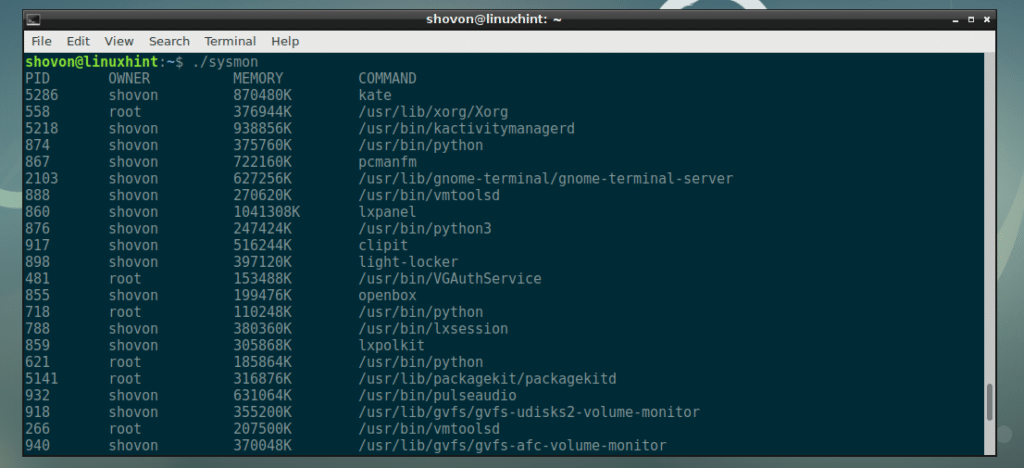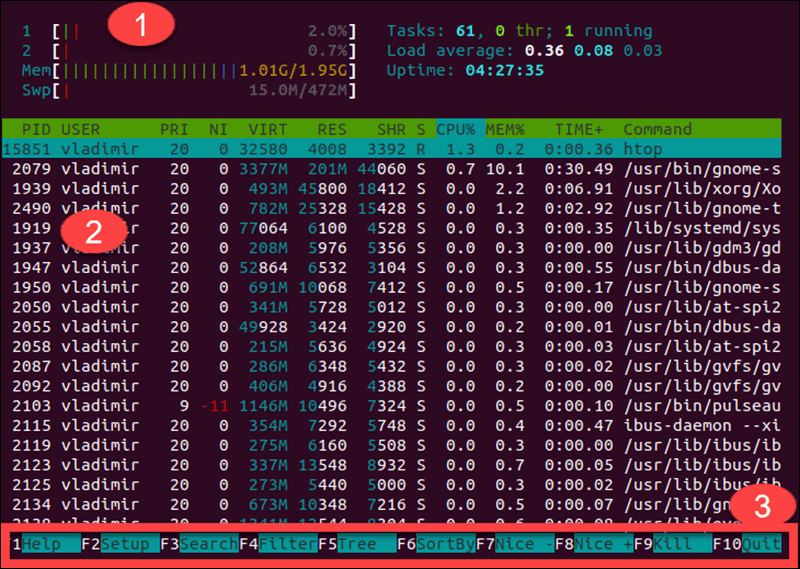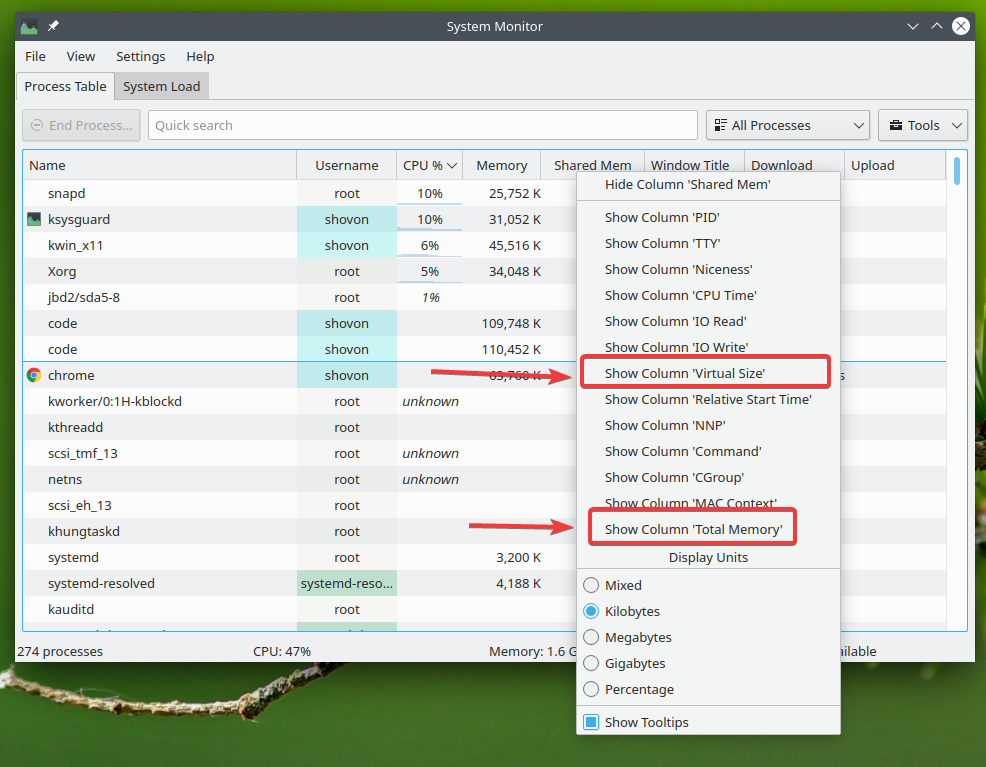
Check cpu memory usage linux free#
total used free shared buff/cache available Mem: 3936 1087 2.

Generally, free is invoked with the -h option that means print the output in human-readable format: free -h. It displays information about the total, used, and free memory. This list includes various details about each process and is refreshed automatically every 5 seconds. free is the most commonly used command for checking the memory usage of a Linux system. The top command generates a list of processes sorted by the parameter %CPU, or percentage of CPU consumed by a process. You can calculate the overall CPU utilization using the idle time using the formula given below:įor example, in the output above, the idle time is 98.3%, so the CPU utilization can be calculated as follows: In the output above, the top command displays various important CPU statistics, including idle time and wait time. It is one of the most widely used commands for tracking the CPU utilization, process statistics, and memory utilization of a Linux system.įor example, running the top command on a Linux system will display an output similar to the one shown below: Fig 1: Output of top command It displays various crucial system metrics along with a set of processes that are currently being managed by the Linux kernel. The top command is used to display a real-time, dynamic view of a running system.

Check cpu memory usage linux software#
Browser tabs with ads or auto-playing videos are openĪpplications or programs that require high processing power, including video editing software and high-resolution video games-can easily drive up CPU usage.Use less or cat to view the contents of the /proc/meminfo file: cat /proc/meminfo. This file is used by the free, top, ps, and other system information commands. Multiple plugins and add-ons are running in the background The simplest way to check the RAM memory usage is to display the contents of the /proc/meminfo virtual file.Several tabs are opened at the same time.BrowserĮven the browser can cause high CPU usage if: These are often invisible and heavily utilize the CPU. If a system becomes extremely slow with a CPU usage of nearly 100%-but with no clear cause-the problem may be a virus or malware. Too many background processes running simultaneously on a computer consume CPU resources and unnecessarily cause high CPU usage. Autostart programs and background processesĪutostart programs are applications that are launched automatically when booting the operating system and they continue to run in the background. If the idle process is taking up to 99% of the CPU's power, it means only 1% is being used to run actual tasks.Ģ. This process appears to show high CPU usage, but it actually indicates the percentage of CPU capacity not being used. If a system is idle, the OS creates a process called the System Idle Process to prevent the system from shutting off. The psutil library gives you information about CPU, RAM, etc., on a variety of platforms. Higher than average CPU usage can often be attributed to one of the following causes: 1. Then, use the following command syntax to open a shell prompt for the desired pod: kubectl exec -it pod name -n namespace - /bin/bash. Seeing a list of pods that we can choose to check CPU and RAM usage for. The idea is that You will call the use ssh -t to run executable on your remote file and get the output on the screen of your local computer.Since high CPU utilization indicates poor system performance, it should be avoided. Use the following command to identify the pod you wish to inspect: kubectl get pods. among them CPU, memory, IRQ usage, I/O, and networking. The free command is one of the widely used commands to quickly check for RAM stats because it’s available on most Linux distributions. While most Linux system monitoring tools monitor only a single aspect of the system, there are a. On your remote server, you should have the following bash script named usage. It’s used to print the physical and swap memory usage by default, it prints to standard output. Printf 'Second Filed\tidling percentage in last 5 minutes\n'

In other words, if you want to check RAM usage in Linux, you use the memory. Printf 'First Field\tprocesses per processor\n' Note: Memory, physical memory terms are used for RAM (which is a more popular term). Ssh myserver$i -o LogLevel=QUIET -t "~/bin/usage" 2 panels should be developed on a single dashboard, one for CPU and one for memory monitoring of your local system. On your local computer, you might want to have the following bash script, named, say, usage_ssh START=1 Note that this gives average CPU usage of the process over the time it has been running.
After searching online and combining a few answers from other questions on stackflow. 22 Answers Sorted by: 289 ps -p

 0 kommentar(er)
0 kommentar(er)
